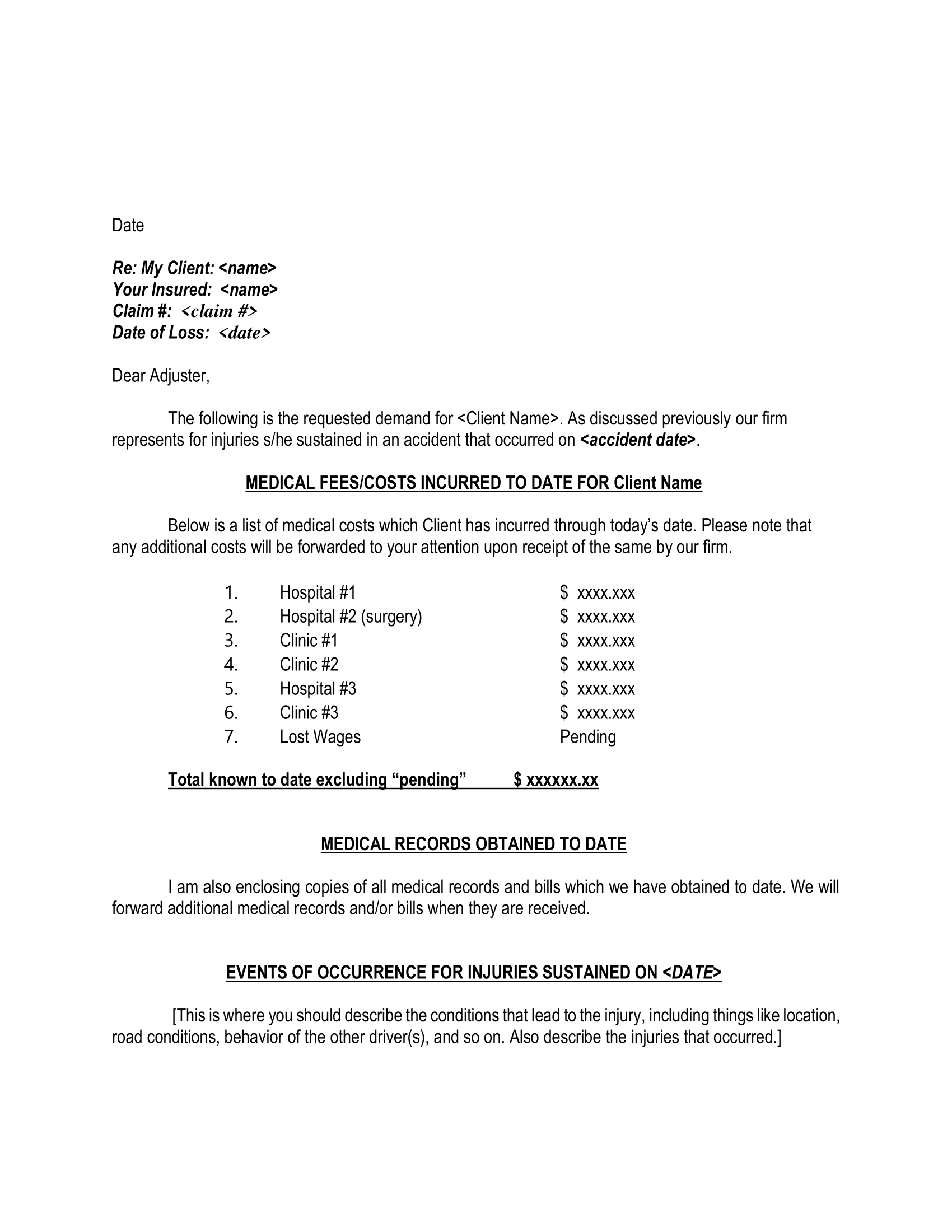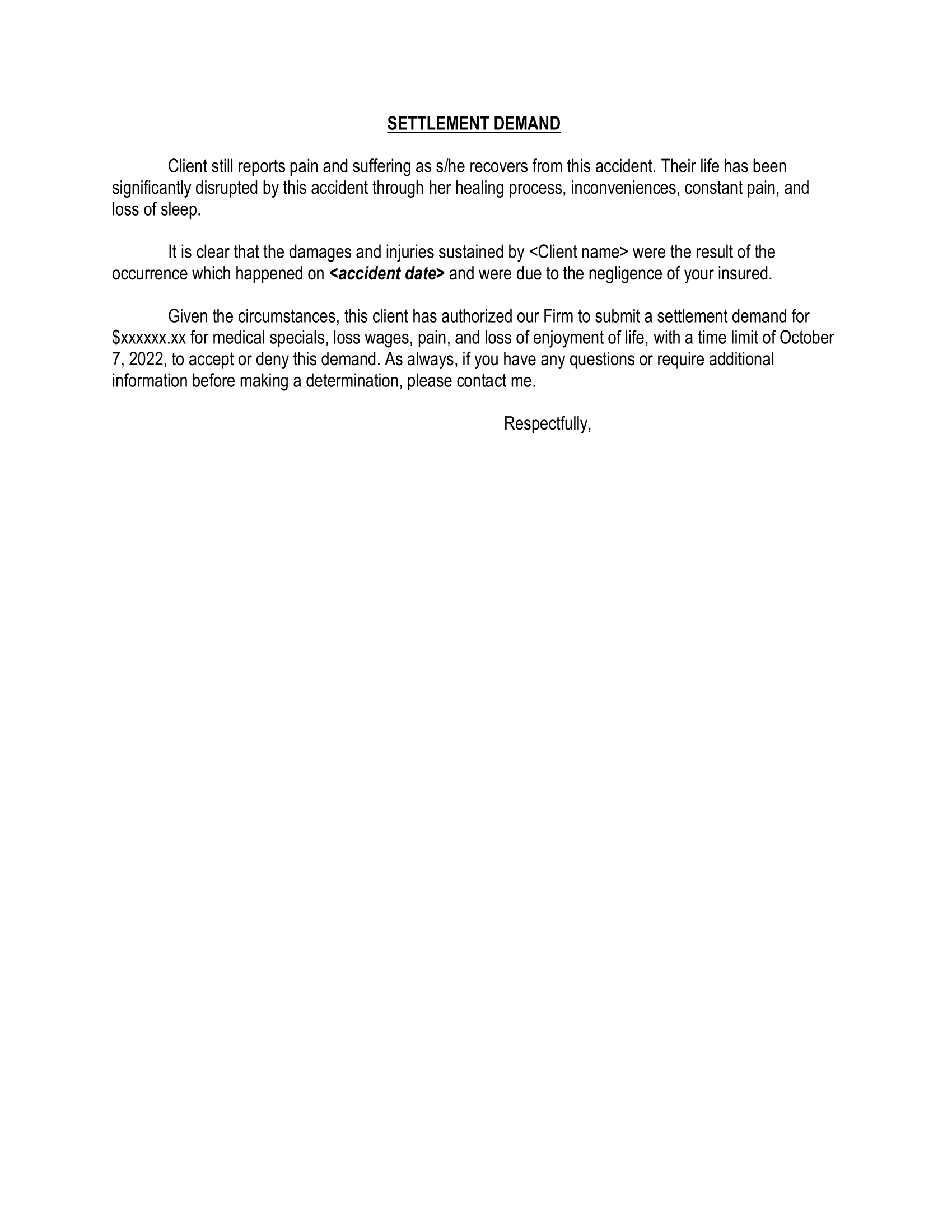A demand letter in a personal injury case serves to notify a business or property owner, and their insurance company, of a victim’s injuries and damages claimed following an accident. It starts the process of negotiating toward settlement of the victim’s claim, including compensation for the medical treatment costs as well as for lost property or wages, and for managing pain and suffering that comes with the injuries.
 Photo by Scott Graham on Unsplash
Photo by Scott Graham on Unsplash
Truck accident injury claims (or any claims involving a commercial vehicle) are best handled by an experienced personal injury attorney. Working with an attorney who is experienced in handling personal injury claims helps to ensure a victim receives fair compensation and also guards against making statements that could potentially damage reaching an agreement or winning the case.
Preparing the Demand Letter
The demand letter is a crucial first tool for filing a personal injury claim. A clear and well-written demand letter outlines damages in a manner that is truthful while only communicating the facts about the injury and its costs to the victim. It also provides details of what amounts the victim is willing to accept to settle their claim. It is a signed, official statement of the victim’s account of the accident.
A demand letter should be written and sent promptly, because there are time limits for a victim to file a personal injury claim. In New Mexico, the statute of limitations varies based on the type of personal injury claim being filed. The state’s civil statutes range from three years for injury to person and four years for damage to personal property. There are also criminal statutes of limitations that may apply, and each type of claim (and criminal charge) may involve a different time limit. An experienced personal injury attorney can help a claim move forward in a prompt and thorough manner.
Grammar, spelling, attention to detail, and even the layout of a demand letter are important. Ensuring names are spelled correctly assures that all the parties involved are identified correctly. Knowing when and how to use approximations, such as “at approximately 12 noon,” is another key element in constructing a demand letter.
Let’s take a closer look at the personal injury demand letter to better understand the purpose behind each of its parts. A sample personal injury demand letter template is also provided.
The Heading of a Demand Letter

The heading of a personal injury claim’s demand letter includes the date the letter is being prepared, followed by lines of information that spell out the relationships of the parties involved. Looking at the provided template that follows, “My Client” would include the name and address of the injured person filing the claim. “Your Insured” is where the name and address of the at-fault truck driver would appear. “Claim #” refers to the identifying claim, policy, or related file numbers. “Date of Loss” is the date when the accident occurred.
After this block of information is a standard greeting (“Dear Adjuster” in the included template), followed by an introduction that states the letter’s purpose: “The following is the requested demand for <Client Name>. As previously discussed…”
Outlining Injury Claims and Costs
This will be the longest part of the demand letter. Presented here are details about the accident itself and the victim’s injuries. Also included in this part of the demand letter are the specific costs to the victim for injuries, damages, losses, ongoing care, and other resulting impacts.
Your letter should take the reader through a detailed account of the accident, and what followed. Be sure to describe your injuries, as well as damages and losses (such as the value of a totaled vehicle or lost wages because of time off work) in complete detail. Don’t forget to include general damages too, such as pain and suffering or emotional distress caused by the accident.
Conditions leading to the sustained injuries, such as the location of the accident, road conditions, the other driver’s behaviors are all vital details to include. The letter should also note why the at-fault truck driver is believed to be responsible for the accident, but sticking to only what is descriptive and factual about the incident. These details will need to be supported through the documentation attached to the demand letter, as will all the details that have been included.
The Terms of a Settlement Demand
In the closing paragraphs of the personal injury claim demand letter, the victim briefly restates their case – ideally in just one sentence. This is followed by a dollar amount that the victim is willing to accept to settle their claim in this accident. Also included is a timeline for the at-fault truck driver (or their representatives) to either accept or deny the victim’s demand.
One copy of the demand letter is sent to the at-fault truck driver’s insurance company (or to the defendant alone if there is no insurance company involved). Another copy is kept on file with the victim, and a third printed copy used as a “working copy” throughout the settlement negotiations.
Working with the experienced attorneys at Kane Personal Injury can help move the demand letter and the entire claim process forward more thoroughly, timely, and effectively.


Please note that this article was created for advertisement purposes, and it does not constitute any contractual legal relationship, nor imply one.
